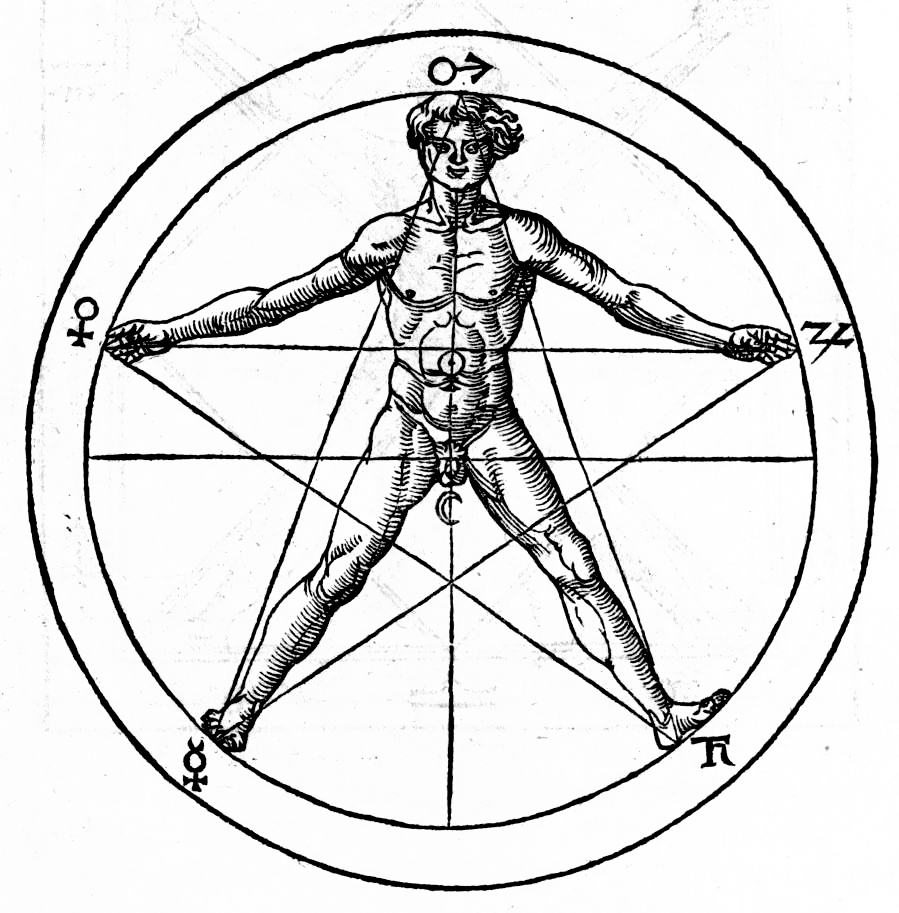Horus was often dep
 n and the Moon were thought of as the eyes of Horus. This is idea of the eyes of Horus is where the symbol of the eye of Horus or Ra is derived (more on this symbol later!). I mentioned in my last blog post, Star crossed lovers...sirius-ly, Horus lost his left eye during a battle with Set but Set later returned it. This part of the story was an allusion to the waxing and waning cycles of the moon. The Wedjat or all seeing eye is the supposed origin of the eye atop the pyramid (another Egyptian symbol) on the back of the U.S. dollar bill pictured right. Looks familiar huh?!
n and the Moon were thought of as the eyes of Horus. This is idea of the eyes of Horus is where the symbol of the eye of Horus or Ra is derived (more on this symbol later!). I mentioned in my last blog post, Star crossed lovers...sirius-ly, Horus lost his left eye during a battle with Set but Set later returned it. This part of the story was an allusion to the waxing and waning cycles of the moon. The Wedjat or all seeing eye is the supposed origin of the eye atop the pyramid (another Egyptian symbol) on the back of the U.S. dollar bill pictured right. Looks familiar huh?!http://en.wikipedia.org/wiki/Horus
According to Plutarch, "on the second of these days Arueris was born whom they call Apollo, and some call him also the elder Horus." The elder Horus, Heru-ur, was looked at as the "god of light" hence the Apollo allusion because Apollo was also considered a god of light or the Sun. Also when considering the battle between Horus and Set one could draw a parallel to the Apollo and Dionysus dialectic.
http://penelope.uchicago.edu/Thayer/E/Roman/Texts/Plutarch/Moralia/Isis_and_Osiris*/A.html
Another important aspect of Horus was as the "crowned and conquering child." Horus being the "miraculously conceived" child of Isis and the god of the dead, Osiris, and conqueror of Set, he is thought of as a type of savior and was associated with the savior deity Shed. Now this is where things get a little hazy. If we recall the hieroglyph for Sirius and the associations, we know that the obelisk represents Osiris the father, the dome represents Isis the mother, and the pentagram represents Horus the child. But why does the five pointed star figure seem to represent the child, the amalgamation of father and mother, or masculine and feminine?

The number five is often associated with man on account of the fact that humans have five fingers and toes on our appendages. Sight, hearing, taste, smell, and touch: five human senses. Thus the pentagram or five-pointed star is commonly looked at as a symbol for man. So when we combine the symbolism of Horus with the pentagram in the Sirius hieroglyph we get a star-child. Hmmm...star child...that sounds familiar.



Taking the symbolism of the Egyptian trinity of father, mother, and child into the context of the pantheon of the Egyptian religion, it appears as though the procreative act itself was deified and worshiped which is evidenced through "sacred prostitution" and "temple orgies". Also, it is important to remember the parallels that we have seen between the Egyptian mythology and analogous mythology in other cultures across time and (Earth) space and the Egyptian practice of the deification of aspects in nature. These seemingly multicultural corresponding father/mother/child trinity mythologies combined with the concept of Egyptian nature worship would implicate a potential spiritual archetype of the procreative act. In other words, they worship sex and the Egyptian trinity is a personification of this worship.
Let's go back to the star/pentagram and take a look at the origins of this symbol. According to Wikipedia (and every other source I can find) the first known uses of the pentagram symbol date back to Mesopotamia around 3000B.C. The Sumerian pentagrams served as pictograms for the word "UB," meaning "corner, angle, nook; a small room, cavity, hole; pitfall." "Successive inferior conjunctions of Venus repeat very near a 13:8 orbital resonance (The Earth orbits 8 times for every 13 orbits of Venus), creating a pentagrammic precession sequence."

So, it looks like the pentagram may have been discovered by early astronomers based on observations of Venus and thus was associated with Ishtar the personification of Venus and the "Queen of Heaven." Something worth noting here is that, along with Ishtar, Isis was also generally referred to as being the "Queen of Heaven" in line with the sacred feminine mythology we discussed previously. Apuleius in his work "The Golden Ass" says of Isis, "You see me here, Lucius, in answer to your prayer. I am nature, the universal Mother, mistress of all the elements, primordial child of time, sovereign of all things spiritual, queen of the dead, queen of the ocean, queen also of the immortals, the single manifestation of all gods and goddesses that are, my nod governs the shining heights of Heavens, the wholesome sea breezes. Though I am worshipped in many aspects, known by countless names ... some know me as Juno, some as Bellona ... the Egyptians who excel in ancient learning and worship call me by my true name...Queen Isis." Seems like we are talking about the deification of the Earth, Earth as mother, or mother Earth as a feminine archetype underlying "countless" goddesses.
In the Sumerian context and according to René Labat's index system of Sumerian Hieroglyphs/Pictograms, the pentagram is shown with two points up or what we refer to today as an inverted pentagram. According to Wikipedia, "the ancient Pythagorean pentagram was drawn with two points up and represented the doctrine of Pentemychos. Pentemychos means "five recesses" or "five chambers", also known as the pentagonas — the five-angle, and was the title of a work written by Pythagora's teacher and friend Phercydes of Syros. It was also the "place" where the first pre-cosmic offspring had to be put in order for the ordered cosmos to appear." It appears as though the "inverted" pentagram in fact predates the upward pointing pentagram. When we think about the Sumerian word for pentagram "UB" meaning pit and combining it with the inverted positioning of the symbol, the pentagram, in this context, seems to be pointing down towards something. What was the pentagram's original orientation intended to point at?! More on this later!
In summary, it is beginning to look like there is an underlying theme developing here in regards to the Father/Mother/Child symbolism present in the Sirius hieroglyph. The procreative spiritual archetype personified in the Father/Mother/Child trinity also seems to predate the Egyptian trinity of Osiris/Isis/Horus. Not only does the procreative Father/Mother/Child symbolism predate Egypt but it appears as though the rituals surrounding this trinity did not originate in Egypt either. In future entries I will attempt to explain these findings and their implications.
I can't end this blog post without another foreshadow to the architectural symbolism present in Washington the District of Columbia. Below you can see some of my mspaint handy work...yes it's awesome I know! You'll notice in the green circle on the bottom right is the domed U.S. Capital, in the bottom left green circle you can see the Washington Obelisk...I mean Monument, and the top left is an apparent inverted(maybe?) pentagram pointing to the White House. As most of us know, the White House is home of the highest office in the land, the Oval (dome) Office...yikes!


No comments:
Post a Comment